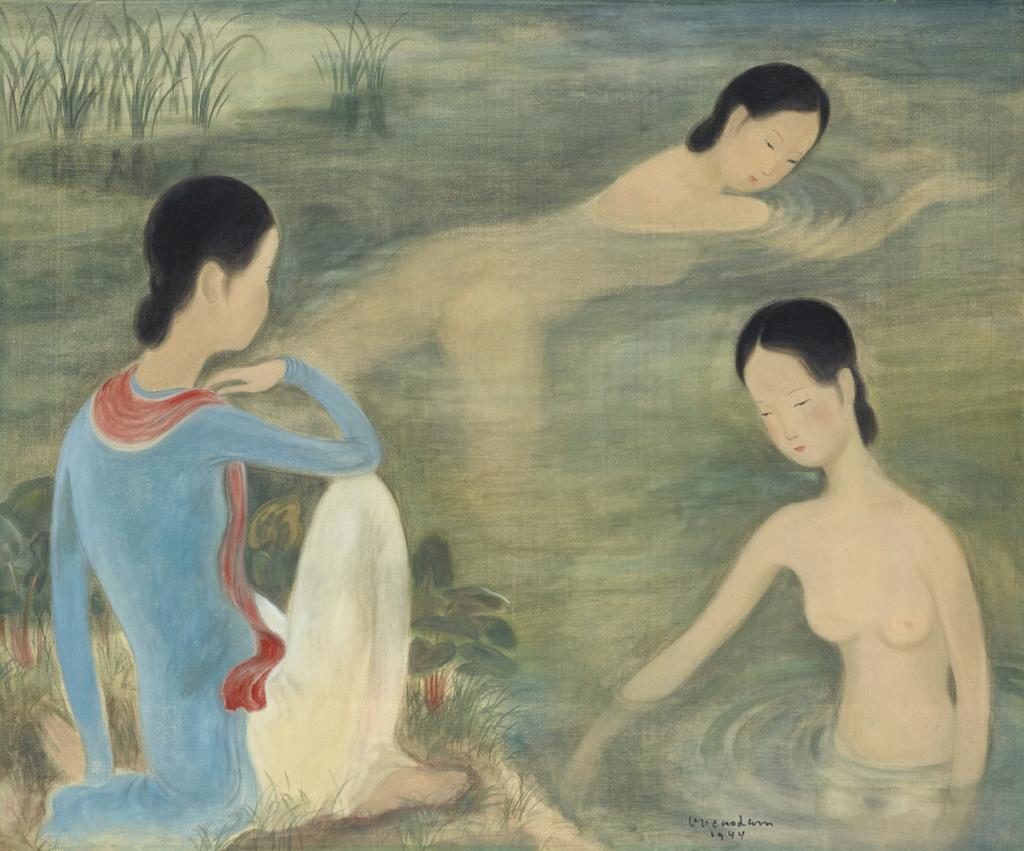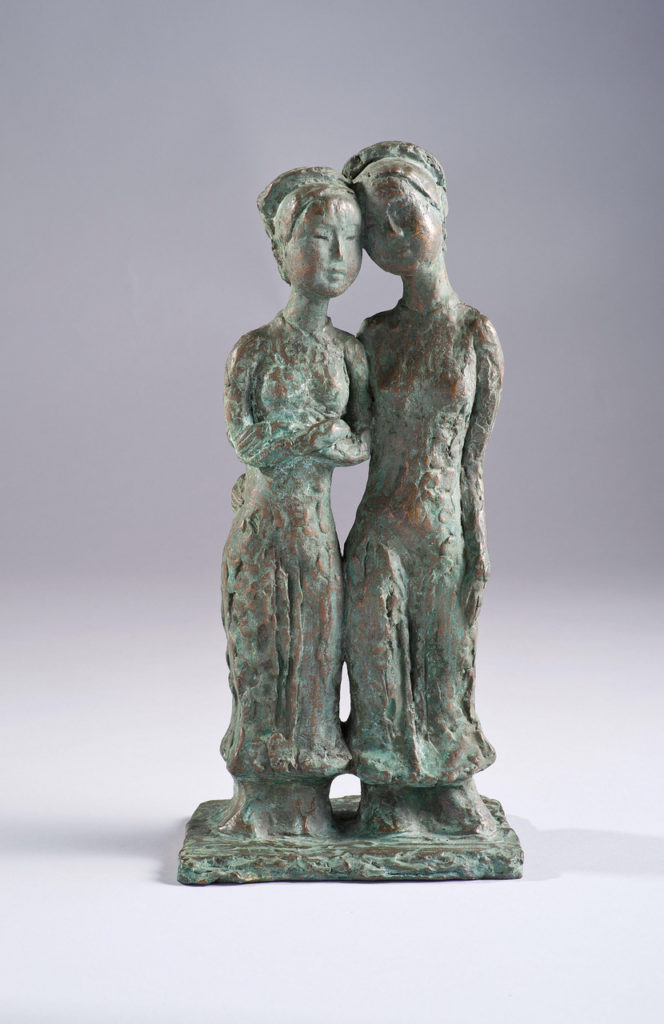Vu Cao Dam: Femmes au Bain, 1944, or the exultation of the body
Since 1940, France – where Vu Cao Dam lived since 1931 – has been under German occupation, made up of fears and deprivations that do not hinder the painter’s work.

Since the early 1940s, he has been using silk previously soaked in water mixed with a little black ink, providing depth to the background, highly identifiable in our work here. Then, once the silk is glued to the paper, and only then, with a fine and skillful brush, he applies diluted ink to create specific forms, or almost flat areas for the hair. He also uses gouache with subtle tones.
Michel Vu, the son of the artist, in a private correspondence (2020) has kindly agreed to comment on the work:
“I would like to thank you for making me discover this painting of bathers by my father. When I see this painting of such high standard, I am first of all proud but above all I realise more and more the privilege of having been close to him.”
Vu Cao Dam has painted very few nudes in his career.
This one shows great sensuality: one of our ladies offers herself to us while swimming, the clear water reveals the intimacy of the other. Their breasts, clearly outlined, reinforce the voluptuousness of the scene.
The third lady –acting as a “witness” of the distinguished ladies of traditional Vietnam at the time of the painter’s youth– displays all its finery –ao dai, scarf.
The first two are in motion, their eyes focused on their thoughts.
Is the third one looking at them or is she thinking? The painter skillfully hides her face from us and leaves us wondering.
Vu Cao Dam – the extraordinary sculptor that he is – sculpts water: water is flush with the skin of these women, like a discreet veil, that does not hide their bodies but on the contrary magnifies them.

He, who usually cares very little about realistically representing nature in his work, distinctly paints taros in the pond. This vegetable, so basic and so nourishing, which every Vietnamese knows well how to prepare, helps to locate the scene: in Vietnam…
Femmes au Bain, a masterpiece by Vu Cao Dam, marks the historical moment when the painter, impressed by the education of Confucian culture, symbolized by the dressed woman, lets himself be drawn by the West -its sensuality, its assumed refusal of the social norms, its philosophical exuberance: all what our two naked women represent.
He got caught up with this limit: if his body is here, in France, his soul will remain over there in Vietnam.
From now on, he is a “wandering body” which, like any “wandering soul”, will seek an impossible rest for the remaining of his existence.
“And it is for the better!” will think the artist, “as the body is everything when it is exulting”.
Jean-François Hubert